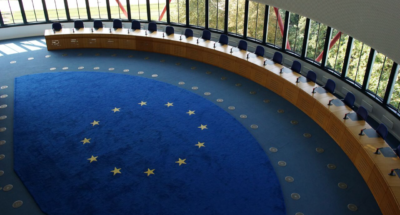
AI and the hidden climate cost of ‘dark data’
Training and fine-tuning AI models requires troves of data, but storing and processing that data is financially and environmentally costly. Here are three ways to address the problem....
Audio available
I am text block. Click edit button to change this text. Lorem ipsum dolor sit amet, consectetur adipiscing elit. Ut elit tellus, luctus nec ullamcorper mattis, pulvinar dapibus leo.
Firms around the globe are shifting their focus on sustainability from talk to action. They are developing sustainable products and services and supply chain practices to increase revenue, satisfy investors and regulators, and improve their reputation. Additionally, these practices help them reduce their environmental footprint while saving costs associated with waste and resource and energy consumption.
Many corporate leaders find sustainability also helps deepen their organization’s sense of purpose to engage and retain a new generation of employees. This shift has been fueled by increasing energy insecurity, rapidly changing regulatory and reporting standards, and investor appetite for environmental, social and governance (ESG) performance.
The COP27 United Nations Climate Change Conference in Egypt and the UN Biodiversity Conference COP15 in Montreal stressed the need for business to create action plans to mitigate human influence on the climate and on nature. The Russian attack on Ukraine and subsequent surge of refugees, growing inflation, and lingering concerns about the COVID-19 pandemic also raise doubts about governments’ ability to ensure an inclusive society. In addition, ESG investors and rating agencies are holding firms accountable for their sustainability records. Expectations are growing for business to play a proactive role in driving efforts to secure a sustainable and inclusive future for the next generation.
For 2023, IMD experts have identified a series of sustainability trends that will drive further business transformation to create value, manage risks, and reconfigure industries and entire systems to ensure we respect our planetary boundaries and create a more inclusive and resilient economy.
Carlos Cordon, Professor of Strategy and Supply Chain Management
Many companies are working hard to meet net-zero sustainability targets by 2050 or other target dates. These include Scope 3 emissions, those which do not come from their own operations but from their larger value chain. That is the hardest part, as usually 90-99% of a company’s greenhouse gas emissions are Scope 3. In that journey, many are also realizing that it is impossible to achieve net zero without looking outside of their traditional business. For example, quite a few food companies can’t achieve net zero without having their suppliers (farmers) planting crops that are of no use for the company supply chain, but which capture CO2. Along that path, they are now asking themselves if they could push even more and transform their supply chains to become CO2 negative, going “beyond net zero”. Not only are they asking those questions, but they are also planning how to pay back the CO2 “debt” that the company has created since its creation.
Vanina Farber, elea Professor of Social Innovation
Patrick Reichert, Term Research Professor and Research Fellow
There is an urgent need for private capital to enter frontier markets to help solve systemic grand challenges. However, organizational transformation and readiness is needed to push the boundaries of the problems that private capital can address and solve. For example, the humanitarian sector is currently experiencing a $32.3bn shortfall between funding and what the UN says is needed. Can development organizations, governments, firms and private financial institutions work together with the humanitarian sector to fill the gap? Collaborative systemic solutions require new approaches to fragility and call for alternative sources of capital to complement traditional grant funding.

Build your smart roadmap for a sustainable business future.

Didier Cossin, Professor of Governance and Finance, Founder and Director of IMD Global Board Center
Sophie Coughlan, Associate Director, IMD Global Board Center
Many boards have responded to increasing ESG pressures by recruiting a sustainability specialist. This is understandable in the face of competing metrics and reporting requirements – and the resulting confusion – but as with digital, geopolitics, or other specific areas of general impact, such roles have been limited to board work. That is not what makes for successful ESG governance. While there is a degree of technical knowledge required, including integrated reporting methodologies and disclosure, there is the risk of a tick-box compliance focus that does not lever a real ESG identity. Instead, boards need to understand their own true personality around ESG and then evolve the board composition in that direction – whether it is climate change, next generation, social justice, or diversity concerns. Finnair Chairman Jouko Karvinen values age and background diversity as part of the airline’s emphasis on sustainability, shifting the scope of the dynamics – and the discussion – in the process. Boards leading on ESG drive the ESG culture of the board through its composition.
Knut Haanaes, Professor of Strategy and Lundin Chair Professor of Sustainability
As we head out of COP27, many are disappointed to see climate deterioration going much faster than any governmental moves to address the crisis. But there are also reasons to be optimistic. Fundamentally, if we take a long-term perspective, we will deal with climate change. It is not a question of “whether”, it is a question of “when”. We will go through the whole energy transition, and we will build a circular economy. We will scale new technologies to gradually disrupt our carbon economy. Some facts are encouraging:
So, there is a real case for a “glass half full” view on climate. Leadership is about being positive and seeing opportunities, and we are living in a time where climate leadership is critically important.
Florian Hoos, Professor of Sustainability and ESG accounting
In a few years, almost all companies around the world will have adopted mandatory sustainability reporting standards – either because they were obliged to by law or because they can no longer resist stakeholder pressures. Board members and top executives can make a choice today between just complying with the new standards and using this one-time change in mandatory reporting as an opportunity to prioritize sustainability even more as a key component of their strategies. The following issues are key in that discussion:
Answering those questions and going beyond just complying with mandatory sustainability reporting standards is key to gaining and maintaining competitive advantage in the future.
Victoria Kemanian, Senior Advisor, Business Transformation Initiative
The challenges of transitioning to the circular economy are such that one single actor cannot tackle them alone. Collaboration within and outside ecosystems in circular economy solutions is central to unlock benefits that organizations cannot achieve on their own. These are accelerating systems transformation by boosting multi-stakeholder innovation, thus reducing costs for players, surmounting obstacles, and advancing solutions adoption. Yet collaborations are difficult to orchestrate as they demand systemic changes in clear contrast with the linear and profit-driven mindset prevailing in business.
Successful examples include multi-stakeholder platforms like the Global Commitment, led by the Ellen McArthur Foundation and the United Nations Environment Program, through which 500 signatories such as Nestlé, PepsiCo, Coca-Cola, Unilever, Mars, and L’Oréal – which together utilize 20% of all plastic packaging produced globally – have committed to ensuring that all plastic packaging is reusable, recyclable, or compostable by 2025, among other circularity goals. With most models still at an experimental stage, a tougher challenge is spreading solutions globally. While policy and regulation play catch up, how will the financial sector, firms, and consumers step up to the challenge?
Öykü Işık, Professor of Digital Strategy and Cybersecurity
ArtificiaI Intelligence, and specifically certain deep learning models such as those designed to process human language, requires huge amounts of energy. By their nature, they process huge amounts of data, and all those data centers carrying out storing and processing tasks require a lot of energy for cooling.
The good news is that AI can also help with better conservation of natural resources through better prediction, managing agriculture yield or managing the demand and supply of energy in energy grids. Also, several AI giants such as Google and Microsoft have already pledged to become carbon negative soon. Moving to a cloud service provider that has made such commitments may help organizations reduce their own carbon footprint as well!
The expectations from AI in terms of efficiency and costs savings is very high – it is still considered to be the most disruptive technology of today. But we need to look beyond short-term benefits and keep an eye on the long-term implications of scaling AI too.
Julia Binder, Professor of Sustainable Innovation and Business Transformation
With all the regulatory changes ahead, 2023 will be a year dominated by managing ESG risks. Considering all these pressures, it’s all too easy to stumble into the ESG reporting trap. All too often, companies and business leaders are not getting any insights from ESG analyses, as they approach ESG reporting solely as a required disclosure exercise. While this “tick-box” approach demands an incredible amount of data, it does not provide insight on how to seize the enormous opportunities that the sustainable transformation will open up across all sectors.
In fact, a recent study by McKinsey estimated that the transition to net zero alone will provide business opportunities of $12trn per year. Beyond capturing new markets, transforming your business towards sustainability is also a way to address changing customer and investor needs, as well as to attract and retain talent.

Chief Sustainability Officer at IMD
Natalia is the Chief Sustainability Officer at IMD. She designs and implements sustainability strategy, develops executive education programs and advisory, publishes research, builds cross-sector partnerships, and communicates IMD’s ambitions and progress. The Center for Sustainable and Inclusive Business, co-led by Olynec, aims to support leaders and companies to take steps towards a more sustainable and inclusive business world by harnessing IMD’s knowledge and expertise in the area and offering tools to help them deliver systemic, innovative, and impactful responses.

Build your smart roadmap for a sustainable business future.

22 April 2024 • by José Parra-Moyano, Christine Legner, Konrad Schulte in Sustainability
Training and fine-tuning AI models requires troves of data, but storing and processing that data is financially and environmentally costly. Here are three ways to address the problem....
 Audio available
Audio available
11 April 2024 • by Knut Haanaes, Francisco Szekely in Sustainability
The link between missed carbon emissions targets and human rights was made this week as a group of Swiss women won a landmark case against their government. What does this mean for...

10 April 2024 • by Tomoko Yokoi in Sustainability
Criticisms of artificial intelligence’s impact on sustainability are justified, says IMD’s Tomoko Yokoi, but there are important steps that technology companies can take to address the problem ...

28 March 2024 • by Dovev Lavie in Sustainability
Introducing a platform-based economic system that promotes prosocial behavior can help society overcome its greatest challenges....
 Audio available
Audio availableExplore first person business intelligence from top minds curated for a global executive audience